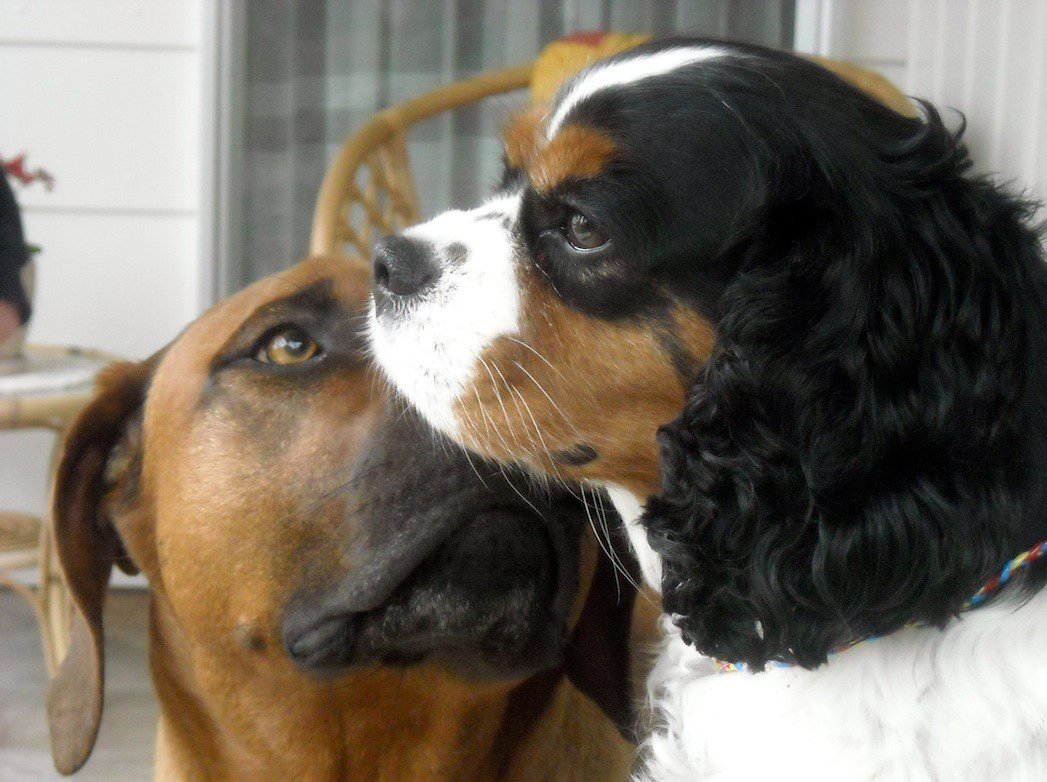When you share your life with a dog, one of the most common complaints is bad breath. Your dog may only have bad breath in certain circumstances, like after they have eaten or just woken up. Halitosis is the medical term used to describe an offensive odor that comes from the mouth, producing bad breath.
Bad breath in dogs can be caused by such things as periodontal disease (bad teeth), gingivitis (more often in cats) or just poor diet. Pets that suffer from severe halitosis often have poor digestion, abnormal bacterial populations in the stomach and small intestines, resulting in a slow passage of food out of the stomach.
Certain dogs-particularly small ones-are especially prone to gum disease. Look for symptoms such as swollen or tender gums, plaque build up and yellow or brownish stains on the teeth.
The two most common sources of dog smells – gas and bad breath, can also be caused by food allergies. Many commercial dog foods contain soy, wheat or corn – foods that often cause digestive upset in dogs with sensitive stomachs. Check the ingredients label and choose dog foods that contain a named meat as the primary ingredient, preferably grain-free. A healthy diet could be the simple solution to a bad breath problem.
Dogs that eat feces (coprophagia) will have bad breath. Pets that are in the habit of scavenging for garbage and foul tasting plants may develop bad breath, and those that eat indigestible items such as sticks, plastic, rubber, etc. can also have bad breath.
In some case, an underlying illness can affect a dogs breath. Severe disease involving the kidneys, adrenal glands, liver or other organs can cause foul mouth odors. Blood tests are needed to determine if this is the cause. If your dog is healthy and active, bad breath is probably nothing to worry about. But if you suspect that your dog has a more serious problem than simple halitosis, see your veterinarian.
Healthy dog teeth should be white and free from plaque buildup. Plaque tends to build up on the back teeth first- you may notice dark discolorations along the gum line. Gums should be pink and shiny, not red or swollen. As plaque builds up along the gum line, it irritates the tissues. The gums may recede and form pockets that allow infections to develop. These infections cause bad breath but can lead to more serious conditions including tooth and bone loss.
Treatment will depend on diagnosis. If plaque is the culprit, your dog might require a professional cleaning. If it’s an issue of diet, you might have to change your dog’s regular food. If the cause is gastrointestinal or an abnormality in your dog’s liver, kidneys or lungs, please consult your vet about the steps you should take.
To maintain your dog’s teeth, brush several times a week. Dog-specific toothbrushes and toothpaste are readily available. Brush gently, concentrating your efforts along the gum line.
Chewing is important! Raw Bones, natural healthy chews, dried pig’s ears etc are a great way to avoid plaque build up.
Look for treats that contain tartar control and breath- freshening ingredients. While these goodies will not reverse gum disease or treat an underlying infection, they can provide short-term breath freshening results. In most cases, a thorough dental cleaning and a healthy diet will improve your dog’s halitosis.
Being proactive about your pets oral health will not only make your life together more pleasant, it’s smart preventive medicine.

